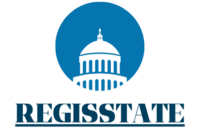Government agencies manage a wide range of facilities, infrastructure, and assets that are critical to public services. From municipal buildings and public works equipment to utilities, parks, and transportation fleets, keeping these assets operational is a matter of efficiency, compliance, and public trust. Yet, maintenance in the public sector often struggles with tight budgets, aging infrastructure, and increasing demands for transparency.
A CMMS provides agencies with the tools to handle these challenges effectively. By streamlining maintenance tasks, organizing asset data, and ensuring compliance with regulations, CMMS technology helps government organizations deliver reliable services while controlling costs.
Centralized Work Order Management
In government settings, maintenance requests can come from multiple sources—employees, contractors, or even members of the public. Without a structured system, requests may get lost or delayed, leading to frustration and inefficiency.
A CMMS solves this by centralizing work orders. Requests can be submitted through an online portal, automatically assigned to the right technician, and tracked from start to finish. Managers have visibility into every request, ensuring that critical tasks—such as repairing HVAC systems in schools or fixing traffic signals—are completed on time. This transparency also makes it easier to justify resource allocation during budget reviews.
Preventive and Predictive Maintenance
Government-owned infrastructure and equipment often remain in use far beyond the private sector’s typical lifecycle. Preventing breakdowns becomes critical, as unexpected failures may affect essential services like water supply, road safety, or emergency response.
A CMMS enables agencies to implement structured preventive maintenance schedules, ensuring that assets are serviced before problems arise. For example, public transit fleets can be inspected based on mileage, while HVAC systems in government offices are serviced on seasonal schedules.
More advanced agencies are adopting predictive maintenance, where sensors monitor conditions such as vibration or temperature. These readings integrate with the CMMS to trigger maintenance before failures occur. By combining preventive and predictive strategies, agencies extend the lifespan of assets and reduce costly emergency repairs.
Asset Lifecycle and Cost Tracking

Every government agency has a responsibility to manage taxpayer-funded assets responsibly. A CMMS provides detailed asset management tools, giving leaders insight into the lifecycle and costs of each piece of equipment or facility.
For instance, a city department can track every vehicle in its fleet—from purchase details and warranty information to repair histories and replacement forecasts. This makes it easier to answer critical questions:
- Which assets cost the most to maintain?
- When is it better to repair rather than replace?
- Are maintenance dollars being spent wisely?
By tracking costs and performance over time, agencies can make data-driven decisions that optimize spending and demonstrate accountability.
Inventory and Parts Management
For public services, delays in maintenance can have wide-reaching impacts. When a water treatment pump fails or a snowplow breaks during a storm, repairs must happen quickly. A CMMS helps government agencies manage spare parts inventory so the right materials are always available.
The system tracks stock levels, issues automatic alerts when items run low, and records vendor details for reordering. For example, a county’s road maintenance department might use a CMMS to track salt spreader parts or grader blades, ensuring they’re ready when winter arrives. This avoids downtime and prevents costly delays in service delivery.
Mobile Access for Field Teams
Many government maintenance tasks occur in the field—repairing traffic signals, maintaining parks, or servicing water mains. CMMS platforms with mobile capabilities empower technicians to receive work orders, update progress, and record notes directly from their phones or tablets.
Instead of returning to the office for paperwork, crews can capture photos, log time, and close out tasks while on site. Supervisors gain real-time visibility into field operations, improving response times for critical repairs and increasing overall efficiency.
Compliance and Safety Management
Government agencies must comply with numerous regulations—ranging from workplace safety and environmental rules to reporting requirements for funding programs. Failing to meet these standards can result in fines, service disruptions, or loss of public trust.
CMMS tools provide built-in compliance support. They store inspection reports, safety checklists, and audit trails in one accessible location. For example, a wastewater treatment facility can keep detailed records of equipment checks to meet environmental standards. In addition, work orders can be designed to include safety procedures, ensuring staff follow required protocols like lockout/tagout.
Transparency and Accountability
Public agencies are increasingly expected to demonstrate how funds are being used. A CMMS strengthens accountability by providing clear records of maintenance activities, costs, and outcomes.
For example, if a city council questions why repair costs for a community center are rising, the maintenance department can generate reports showing work histories, parts usage, and contractor involvement. This transparency builds trust with stakeholders and demonstrates that resources are managed responsibly.
Reporting and Data-Driven Decision Making
Data is one of the most valuable features of a CMMS. Government agencies can use reporting and dashboards to measure performance, track budgets, and identify trends.
Key performance indicators might include:
- Average response time to maintenance requests
- Ratio of preventive versus reactive work
- Total cost of maintaining specific assets
By analyzing these metrics, agencies can identify inefficiencies, justify funding requests, and prioritize projects that deliver the most value to the community.
Integration with Other Systems
Many government agencies already use systems for finance, human resources, or geographic information. A CMMS can integrate with these platforms, ensuring that maintenance data connects with budgeting, payroll, and asset mapping systems.
For instance, integrating a CMMS with GIS software allows city planners to view the exact location of water lines or streetlights alongside their maintenance history. This level of detail helps improve planning and reduces duplicate efforts across departments.
Cost Efficiency and ROI for the Public Sector
Budgets in government agencies are often limited, and leaders must carefully justify every expense. A CMMS delivers measurable return on investment by reducing downtime, lowering repair costs, and extending asset life.
Preventive maintenance reduces the frequency of emergency repairs, which are usually more expensive. Automated inventory tracking prevents both shortages and overspending. By providing accurate data, agencies can also improve budgeting accuracy and secure funding by demonstrating savings and efficiency gains.
The Future of CMMS in Public Service
As governments embrace digital transformation, CMMS platforms will continue to evolve. Cloud-based solutions allow agencies to scale across multiple departments or locations without heavy infrastructure costs. Artificial intelligence will bring smarter predictions about equipment failures, while mobile access ensures field teams remain connected.
Ultimately, the CMMS of the future won’t just manage maintenance—it will support strategic planning across all levels of government, helping agencies deliver better services with fewer resources.
Government agencies carry a unique responsibility: managing assets that impact entire communities. Keeping infrastructure reliable, safe, and cost-effective is not just an operational need—it’s a matter of public service and accountability.
By centralizing work orders, streamlining preventive maintenance, managing assets, and offering transparency through reporting, a CMMS empowers agencies to operate more efficiently and responsibly. Instead of reacting to problems, governments can adopt a proactive approach—one that safeguards public resources, enhances trust, and ensures essential services are delivered without interruption.



